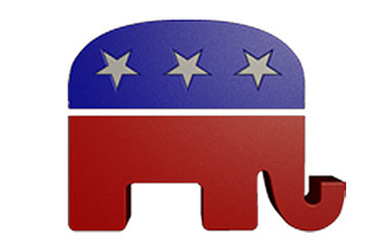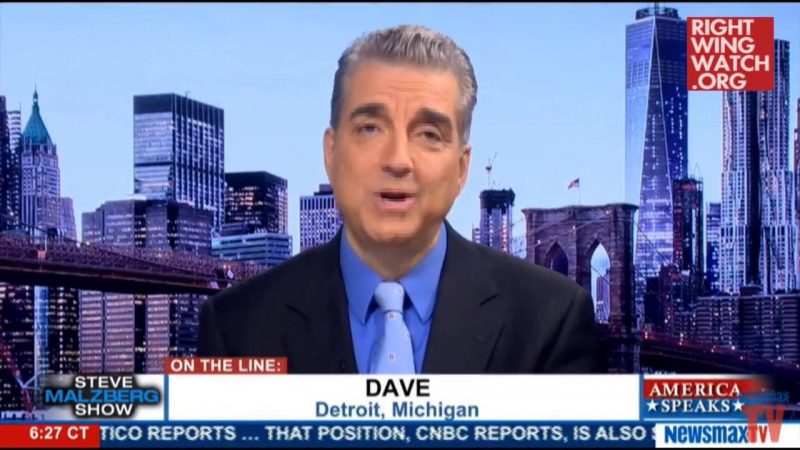The Texas State Board of Education’s right-wing spin on U.S. history has earned the state a “D” from a conservative education think tank. Mary Tuma of the Texas Independent notes that the Thomas B. Fordham Institute is a “national conservative group calls for a ‘radical’ overhaul of U.S. history standards at K-12 public schools nationwide,” but even the self-declared “right-of-center” group couldn’t deny the drastic manipulation of the education curriculum by the far-right SBOE. The new education standards, outlined in the Right Wing Watch In-Focus: Texas Textbooks, downplay the roles of the civil rights and labor movements, whitewash slavery and Japanese internment, utilize a Religious Right view of the Constitution and the nation’s founding, and embrace a partisan Republican reading of history (among other changes) in an attempt to remove the alleged “liberal bias” of history textbooks.
The Fordham Institute lowered Texas’ rating from a C to a D due to the SBOE’s “blatant politicizing,” saying that “history is distorted throughout the document in the interest of political talking points.” According to the report, the new Texas standards are “inculcated” with “right-wing policy positions” and promote the Religious Right’s interpretation of government as the “Biblical influences on America’s founding are exaggerated, if not invented.” The report states:
Texas’s heavily politicized 2010 revisions to its social studies curriculum have attracted massive national attention. Indeed, both in public hearings and press interviews, the leaders of the State Board of Education made no secret of their evangelical Christian right agenda, promising to inculcate biblical principles, patriotic values, and American exceptionalism. And politics do figure heavily in the resulting TEKS.
…
While such social studies doctrine is usually associated with the relativist and diversity-obsessed educational left, the right-dominated Texas Board of Education made no effort to replace traditional social studies dogma with substantive historical content. Instead, it seems to have grafted on its own conservative talking points. The lists of “historically significant” names, for example, incorporate all the familiar politically correct group categories (women and minorities are systematically included in all such lists, regardless of their relative historical significance). At the same time, however, the document distorts or suppresses less triumphal or more nuanced aspects of our past that the Board found politically unacceptable (slavery and segregation are all but ignored, while religious influences are grossly exaggerated). The resulting fusion is a confusing, unteachable hodgepodge, blending the worst of two educational dogmas.
Complex historical issues are obscured with blatant politicizing throughout the document. Biblical influences on America’s founding are exaggerated, if not invented. The complicated but undeniable history of separation between church and state is flatly dismissed. From the earliest grades, students are pressed to uncritically celebrate the “free enterprise system and its benefits.” “Minimal government intrusion” is hailed as key to the early nineteenth-century commercial boom—ignoring the critical role of the state and federal governments in internal improvements and economic expansion. Native peoples are missing until brief references to nineteenth-century events. Slavery, too, is largely missing. Sectionalism and states’ rights are listed before slavery as causes of the Civil War, while the issue of slavery in the territories—the actual trigger for the sectional crisis—is never mentioned at all. During and after Reconstruction, there is no mention of the Black Codes, the Ku Klux Klan, or sharecropping; the term “Jim Crow” never appears. Incredibly, racial segregation is only mentioned in a passing reference to the 1948 integration of the armed forces.
In the modern era, the standards list “the internment of German, Italian and Japanese Americans and Executive Order 9066”—exaggerating the comparatively trivial internment of German and Italian Americans, and thereby obscuring the incontrovertible racial dimension of the larger and more systematic Japanese American internment. It is disingenuously suggested that the House Un-American Activities Committee— and, by extension, McCarthyism—have been vindicated by the Venona decrypts of Soviet espionage activities (which had, in reality, no link to McCarthy’s targets). Opposition to the civil rights movement is falsely identified only with “the congressional bloc of Southern Democrats”—whose later metamorphosis into Southern Republicans is never mentioned. Specific right-wing policy positions are inculcated as well. For example, students are explicitly urged to condemn federal entitlement programs, including Texas-born Lyndon Johnson’s “Great Society,” and to mistrust international treaties (considered threats to American sovereignty).
…
Slavery, so central to the history of Texas, is mentioned only in passing. And then, of course, the other seven strands “cover” the same period yet again. In the high school U.S. history course, the pattern is the same. Scattered examples and lists of names quickly move through late nineteenth-century politics, the emergence of the United States as a world power, Progressivism, and the 1920s; on to the civil rights movement, the Reagan era, 9/11 and beyond. Once again, the other strands revisit the same ground from different perspectives, adding more isolated factoids and ill-matched lists of names. Then, the government and economics courses (themselves subdivided into the usual strands) “cover” the subject yet again, each strand and course offering further fragments of material in a historically incomprehensible jumble.








